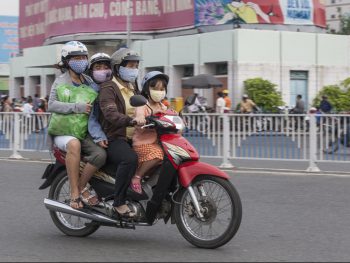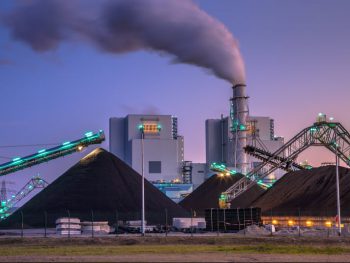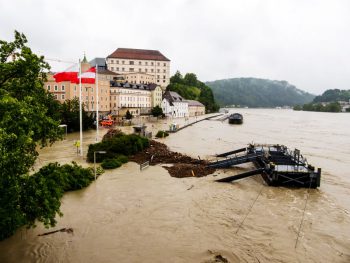Towards better air quality management in Vietnam

© Biserko | Dreamstime
A cooperative scientific project on air quality management in Vietnam between IIASA and its Vietnamese National Member Organization, the Vietnamese Academy of Science and Technology, reached an important milestone in 2018 with the publication of its first year’s progress report. During the first year of the project, the IIASA Greenhouse Gas – Air Pollution Interactions and Synergies (GAINS) model was adapted to the Greater Ha Noi/Red River Delta area and surrounding regions, and an initial set of data compiled from publicly available statistics and studies. A report [1] on this phase of the project was presented at a workshop in Hanoi towards the end of 2018, which also marked the formal launch of the GAINS-Vietnam model.
The report highlights that air pollution is a real problem in Vietnam, with the measured annual mean concentrations of fine particulate matter (PM2.5) in the air exceeding the global guidelines of the World Health Organization by a wide margin. PM2.5 refers to particles in the atmosphere that have a diameter of less than 2.5 micrometers – about 3% of the breadth of a human hair. These can come from various sources including power plants, residential wood burning, airplanes, motor vehicles, and forest fires. Because they are so small and light, these particles stay in the air longer, thus increasing the chances of humans and animals experiencing adverse health effects from inhaling them.
According to the researchers, Ha Noi’s air quality could deteriorate even further in the future due to the anticipated increase in economic activity, despite the currently adopted policy measures. They caution that, without additional policy measures particulate matter concentrations in northern Vietnam could be 25-30% higher in 2030 than in 2015. This implies that almost 85% of the population in northern Vietnam would be exposed to air quality that does not conform to the national ambient air quality standard.
The analysis also shows that effective improvements of specifically Ha Noi’s air quality will require coordination with neighboring provinces because, while about one third of PM2.5 exposure in Ha Noi originates from emission sources within the same province, the majority is imported from outside. This means that if restricted to the Ha Noi province, even the most stringent emission control measures will be insufficient to effectively reduce ambient pollution levels in the city.
Although further work will be necessary to refine the GAINS-Vietnam tool, the initial findings are highly relevant for air quality management in the country. Cost-effective strategies need to combine technical emission controls with policies that promote structural changes, such as energy efficiency improvements and a transition to cleaner fuels. Once fully implemented, the GAINS-Vietnam tool could help to identify effective portfolios of measures that take into account the costs, benefits, and political economy of policy interventions.
References
[1] Amann M, Klimont Z , An Ha T, Rafaj P, Kiesewetter G, Gomez Sanabria A, Nguyen B, Thi Thu TN, et al. (2019). Future air quality in Ha Noi and northern Vietnam. IIASA Research Report. Laxenburg, Austria: RR-19-003
Further information
- The Vietnam Academy of Science and Technology (VAST), Vietnam




